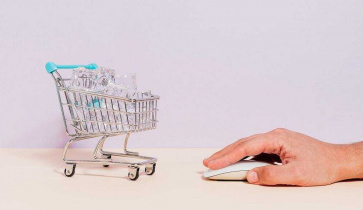
Ecommerce and Retail • Neto

Despite most shoppers enjoying the convenience of online shopping and delivery services, there’s still a pleasure to wandering around the shopping mall that goes beyond escaping the summer heat. Customers enjoy face-to-face time with your brand ambassadors and products, whether they’re buying or just browsing. That’s why retailers with omni-channel strategies are outperforming the rest of the market in terms of profit and customer retention—they make use of the modern shopper’s tendency to mix and match in-store and online shopping to create a truly memorable shopping experience.
Successful ecommerce store owners are recognising that offline experiences aren’t just for traditional bricks-and-mortar customers, and finding new and exciting approaches to recreate their brand experience in the physical world. Here are six ways to leverage retail technology and give your online customers the “clicks and mortar” experience.
Customers love the speed and convenience of click-and-collect orders. They get their hands on their goods faster without needing to wait around at home to sign for a delivery, and for 44% of shoppers, that’s a strong incentive to purchase online. And with 34% of Australian shoppers using their mobile devices in-store to compare prices and check nearby product availability, you may even lure customers out of your competitor’s stores, if they can buy now and collect their order on their way home.
Don’t have a permanent shop for customers to collect their orders from? Don’t let that deter you: consider offering the service from your warehouse, office, or pop-up shop, or through a third-party provider.
Sometimes a customer orders something online and eagerly awaits delivery only to discover it’s not quite what they expected. Maybe it’s broken, maybe they ordered the wrong size or colour, or maybe it just doesn’t match the product description. The same thing can happen in brics-and-mortar stores, but in-store customers are more likely to notice the problem before they pay, and less likely to be put off purchasing by the possibility of a difficult returns process.
Yes, a whopping 62% of shoppers are more likely to buy an item online if they can return it to your store, it makes sense to give customers an easy way to ask questions, receive help with troubleshooting, and have items assessed for return without the inconvenience and cost of return shipping. After all, 92% are likely to come back if they found the returns process easy. So, even if you don’t have an offline sales channel like a traditional store, consider having an offline service centre where customers can talk to you your team for help with their purchases.
Like a scaled-down version of a traditional store or a showroom, pop-up shops, roadshow booths and market stalls give you a lower-cost space to enjoy face-to-face time with your customers. They can come in, ask questions and test drive products so they’re confident they’re buying the right thing, first time.
Temporary retail spaces offer operational flexibility to target a particular customer demographic or meet seasonal demand for particular products or services. For example, around 40% of online shoppers try to limit their time spent in major shopping malls as Christmas approaches, instead opting for online purchases with companies offering a click-and-collect service. For online retailers without a permanent physical outlet, a temporary store lets you provide this same option, while improving brand awareness and visibility.
Retail technology makes it easier than ever to provide your customers with timely, relevant and targeted information through their mobile devices. Make sure your responsive website uses mapping services to guide customers to your store or warehouse, or use beacons in other physical locations to help find your pop-up shop or market stalls in the crowd. Also consider how you could use location services to offer incentives to customers who check in on social media or visit your store, especially if you’ve got direct competitors nearby.
Live events are a fun and exciting opportunity to interact with your customers, especially if your products are best suited to online or social marketing channels. If you’re introducing a new product line, host a launch party where your customers can mingle with others who love your brand. Or find sponsorship opportunities at conferences, local community events and sporting carnivals that let you showcase not only your products, but also your personality. And if you’ve got a mobile-ready ecommerce or point-of-sale system, you’re never really offline, so you can make a sale from anywhere—even in the middle of a launch party.
You can charm all your customers—even the ones who never want to venture into a shopping mall—if you personalise their shopping experience using your customer data. We tend to think of ways we can do this on our website or through email marketing campaigns, but this approach applies to the whole shopping experience from the first touchpoint to the final delivery. It can be as simple as tucking a coupon into their package that offers them free shipping or a small discount with their next order. What more could your online shopper want?
It’s possible to give even your most ardent online-shopping lovers an exceptional offline experience if you leverage your customer data with the latest retail technologies. Neto’s leading ecommerce platform will help you reach your customers across multiple channels, however they like to shop. We’ve also got a few tips on alternatives to traditional bricks-and-mortar stores for online shop owners looking to connect with customers in the real world.